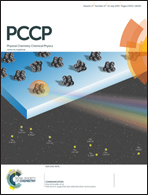Realizing chemical codoping in TiO2†
Abstract
We demonstrate experimentally a chemical codoping approach that would simultaneously narrow the band gap and control the band edge positions of TiO2 semiconductors. It is shown that a sequential doping scheme with nitrogen (N) leading the way, followed by phosphorus (P), is crucial for the incorporation of both N and P into the anion sites. Various characterization techniques confirm the formation of the N–P bonds, and as a consequence of chemical codoping, the band gap of TiO2 is reduced from 3.2 eV to 1.8 eV. The realization of chemical codoping could be an important step forward in improving the general performance of electronic and optoelectronic materials and devices.


 Please wait while we load your content...
Please wait while we load your content...